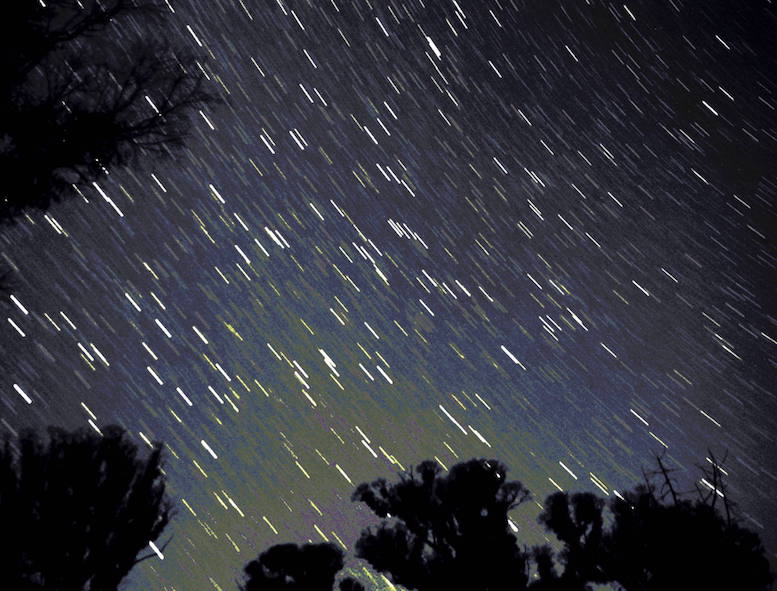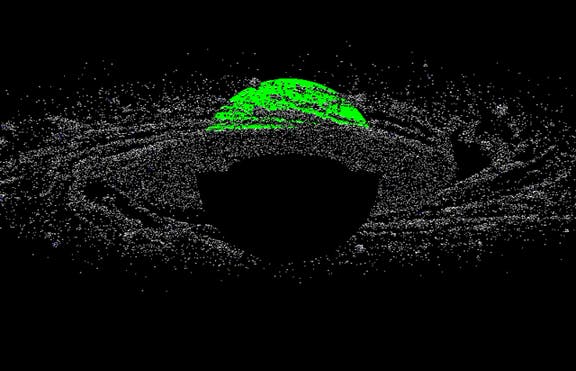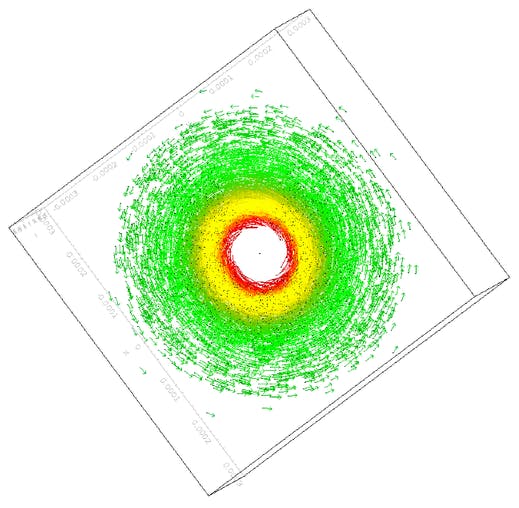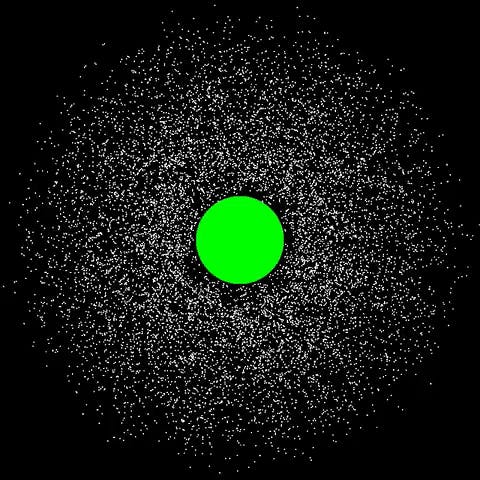Moon formation
Running simulations of disks around a proto-Earth using an N-body code
With modifications to a gravity code (PKDGRAV), I ran simulations of "particles" in orbit around the Earth in order to estimate collisional energies, which contributed (in a very tiny fashion) to the Terrestrial Synestia model of Lock et al (2018).
Below I show snapshots of a moon-forming event, indicating the Roche radius in red and time in units of Kepler period (TK).
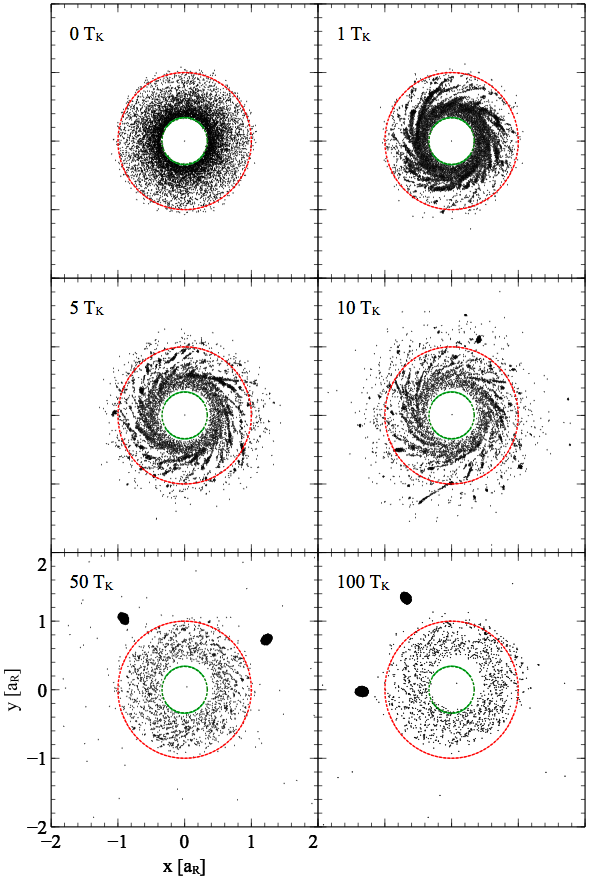
A movie of a high-spin disk following Nakajima (2014)'s initial conditions shows how rapidly a moon forms in such a scenario (which has ramifications when thinking about the chemical composition of the Moon):
